
A blog focusing on 1/64 diecast from such popular brands as Hot Wheels, Matchbox, Johnny Lightning, M2 Machines, GreenLight, Tomica, Yat Ming, Majorette, MotorMax, Siku, Corgi, Guisval, Playart, Ertl, Zylmex, Racing Champions, & many more. Swifty's Garage features a daily Car Of The Day and news updates from your favorite brands!
Friday, November 19, 2010
Truck Of The Day: November 19, 2010
Today's car of the day is Playart's 1979 Chevrolet Blazer.
The K5 Blazer was the smallest full size SUV version of the General Motors C/K Trucks family. Introduced to the Chevrolet line in 1969, the full-size Blazer was replaced in 1995 by the Chevrolet Tahoe. In 1970, GMC introduced its own model of the truck, called the Jimmy, which lasted until the 1992 GMC Yukon. Both were based on the short wheelbase trucks and were available with either rear-wheel drive or four-wheel drive. The Blazer's long wheelbase relative (with an integrated rear body, and doors for 2nd row passengers) is known as the Chevrolet Suburban.
The K5 Blazer and Jimmy had "full convertible" removable tops until 1976. In 1976, GM introduced a half-cab design that was less prone to leaks and slightly safer in a roll-over. These half cabs are convertible starting at a few inches behind the driver/passenger doors all the way back to the tailgate. In 1992, the Blazer was redesigned completely and no longer had a removable top.
Smaller models, the S-10 Blazer and S-15 Jimmy, were introduced alongside these trucks in 1983. The original Blazer and Jimmy remained in production until 1991; 1992 saw the introduction of a new K1500 Blazer (and the rebadged GMC Yukon) on the GMT400 platform. After 1994, the Blazer was renamed the Chevrolet Tahoe and it was offered in a two Door model up until 1999. After that it was offered only with four passenger doors.
For more information and pictures of the real car please visit: Chevrolet K5 Blazer
This one is just a great piece. The opening tailgate, the roof rack, the extra lights- it looks like it's ready for an off-road excursion! It's also a timely one thanks to Zach's article on Blazers in the Collector's Corner- check it out!
In 1973, GM's line of full-size trucks was redesigned and updated. Although rear-wheel drive Blazers were manufactured until 1982, the majority sold were four-wheel drive.
Until 1975, the K5 had a removable convertible top. In 1976, a half-cab design was introduced used until 1991.
Although the GMT400 platform was introduced in the spring of 1987 as a 1988 model, the K5 Blazer, Suburban, and crew-cab trucks retained the earlier platform until 1991. In 1989, the front grille was changed to resemble the squared-off ones used on the GMT400 series of pickups.
The K5 Blazer is very popular in the off-roading scene. It is a strong truck with the 350 V8 (which was the optional power plant), the gear driven NP-205 and 10- and 12-bolt axles. It is very easy to upgrade this engine, because there are many companies with performance parts available. Later models produced after 1980 used the chain-driven NP208 transfer case, and the NP241 after 1988.
Since 1981 (in the wake of the 1973 Arab Oil Embargo and the 1979 energy crisis), Chevrolet and GMC used the smaller displacement 305s with a 9.2:1 compression ratio. These engines produced nearly as much torque as the 350, giving a similar driving feel. However, these power plants were underpowered and susceptible to detonation (engine knocking), especially with the electronic spark control module. To achieve the 9.2:1 compression ratio, the cylinder head chambers were smaller, measuring 54 cc instead of 60 cc. Despite a camshaft swap, some Blazer owners swapped out the 305s in favor of 350s, since the smaller displacement power plant was used in all Chevrolet/GMC pickups and passenger cars.
1982 saw the Detroit Diesel 6.2 introduced; diesel-powered K5s are sought after (especially for diesel conversions running biodiesel and/or straight vegetable oil).
Around 1981, a prototype K5 Blazer was used as a testbed for a military CUCV vehicle. Between 1983 and 1987, what is known as the M1009 CUCV was the production militarized version of the civilian K5. The differences are the lack of an air conditioner an additional leaf spring in the suspension, a hybrid 12/24 V electrical system (described in detail below), blackout headlights, a rifle rack, and special paint jobs. A majority of them are painted olive drab green or in the woodland camouflage pattern, though some vehicles that saw desert use were painted tan. All M1009s, including its derivatives, are powered with the 6.2 L Diesel power plant.
The M1009s have a split 24/12 V electrical system. Most of the truck actually runs on 12 V. It has two separate 12 V alternators and batteries wired in series, only the glow plug system, the starter, and the jumper cable jack are wired to the 24 V terminals. everything else in the truck runs on 12 V. The glow plugs are actually 12 V glow plugs with a resistor pack on the firewall to drop the 24 V down to 12 V. This resistor pack can be bypassed and the glow plugs run directly off of the 12 V battery. If this is done and the 24 V starter is replaced with a standard 12v starter the second alternator and battery are no longer needed. (If this is done then the military 24 V slave adapter in the grille will need to be disconnected as well.)
Some decommissioned M1009s end up in law enforcement use (e.g. with the Los Angeles County Sheriff's Department) or sold through government auctions, but a handful are still in use by the National Guard.
After 1987, when throttle-body injection was introduced in the truck engines, the 350 was made the standard power plant.
It's a true shame Playart didn't make it out of the 1980s. I wish someone had snapped up all their tooling, but to my knowledge, no one did. They did a ton of cars no one else bothered with and they made some very nice castings. Most suffer from poor wheel choices, but this example does not. The later issues have some of the nicest wheels (and of course, the earlier hubcap Playarts have the best).
Subscribe to:
Post Comments (Atom)
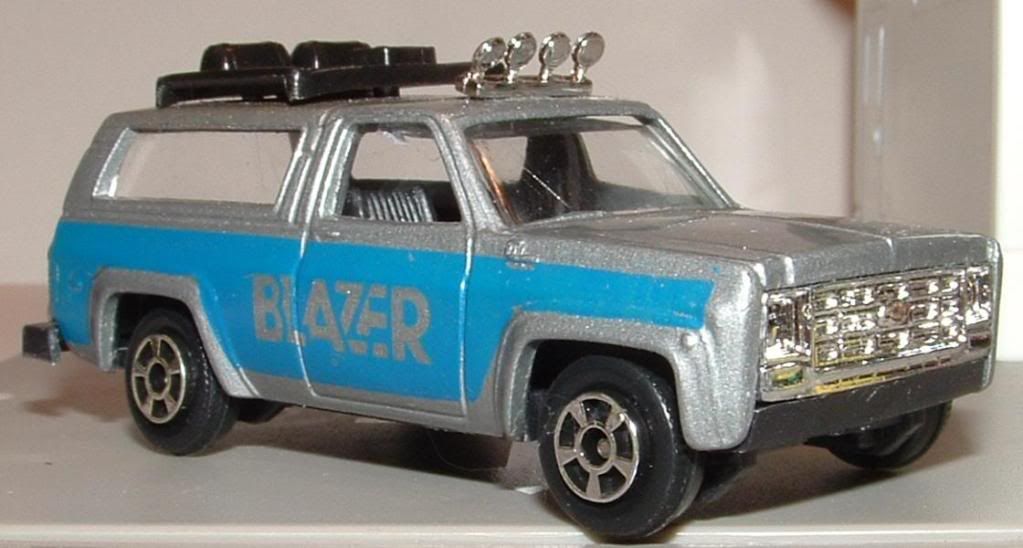
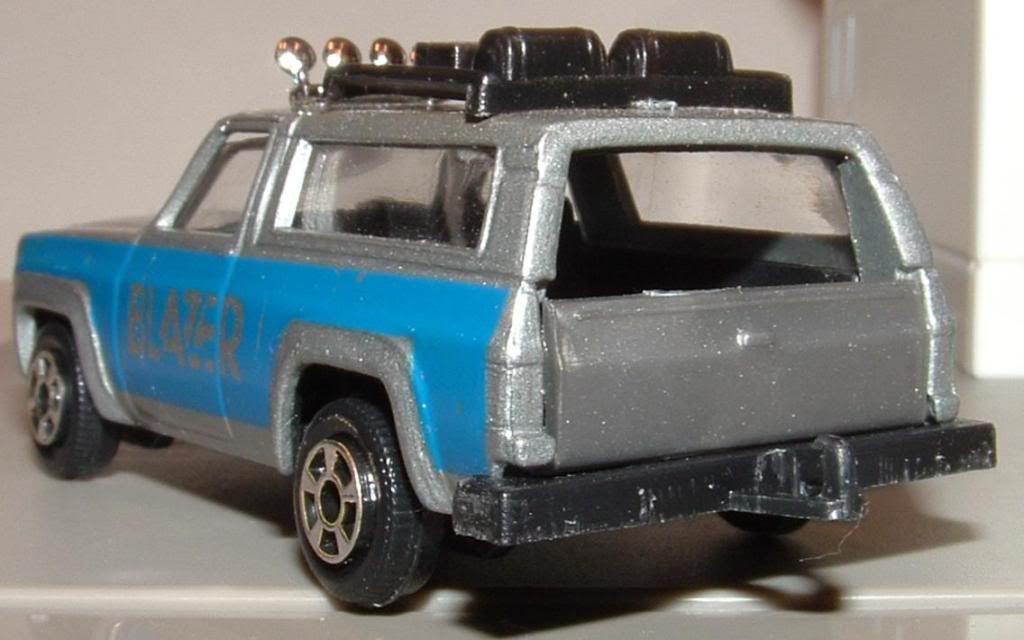
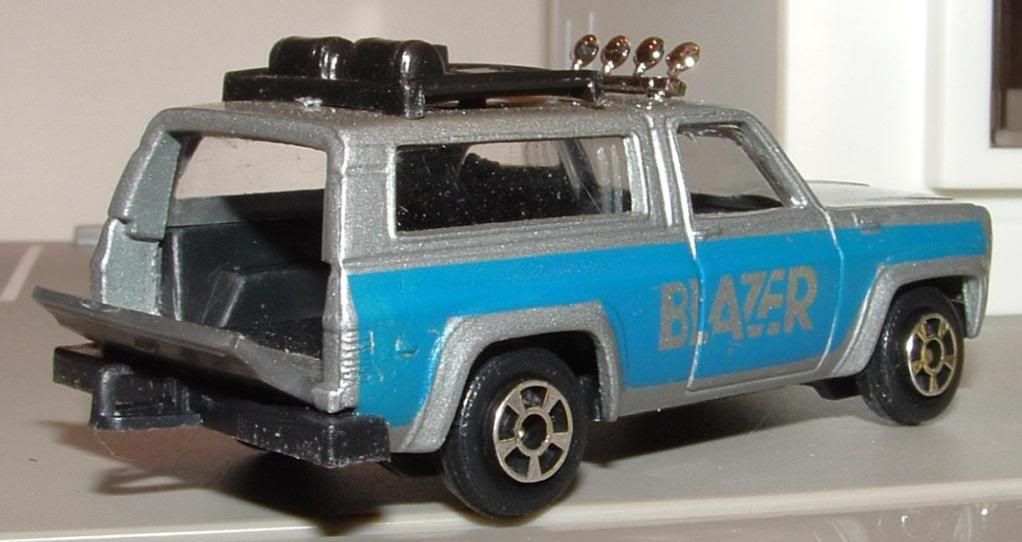
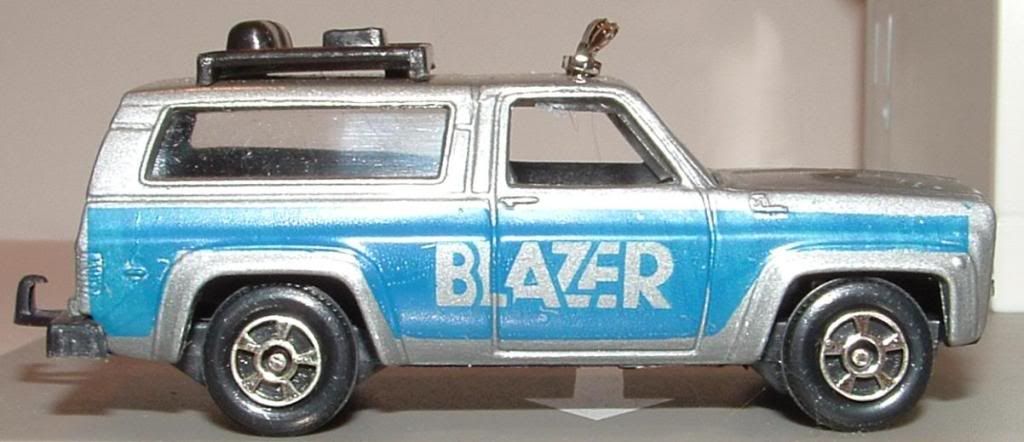
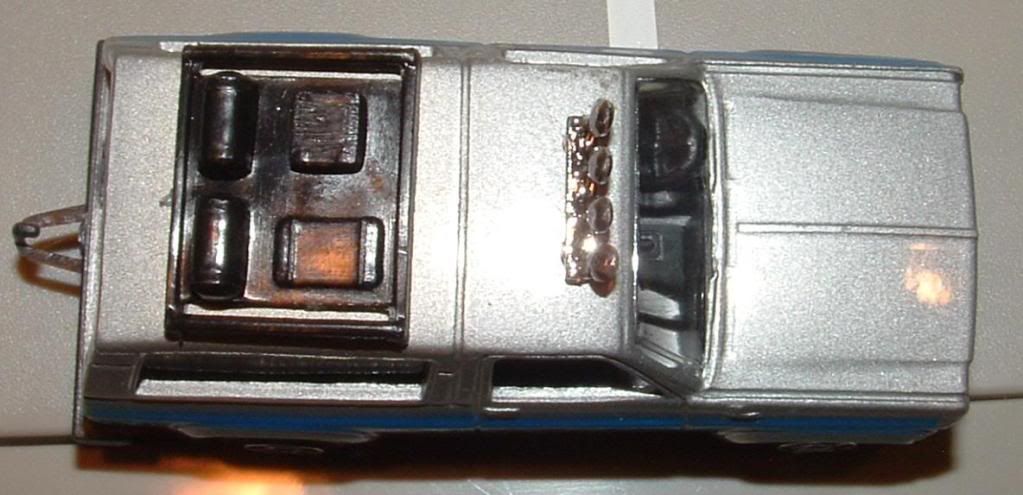

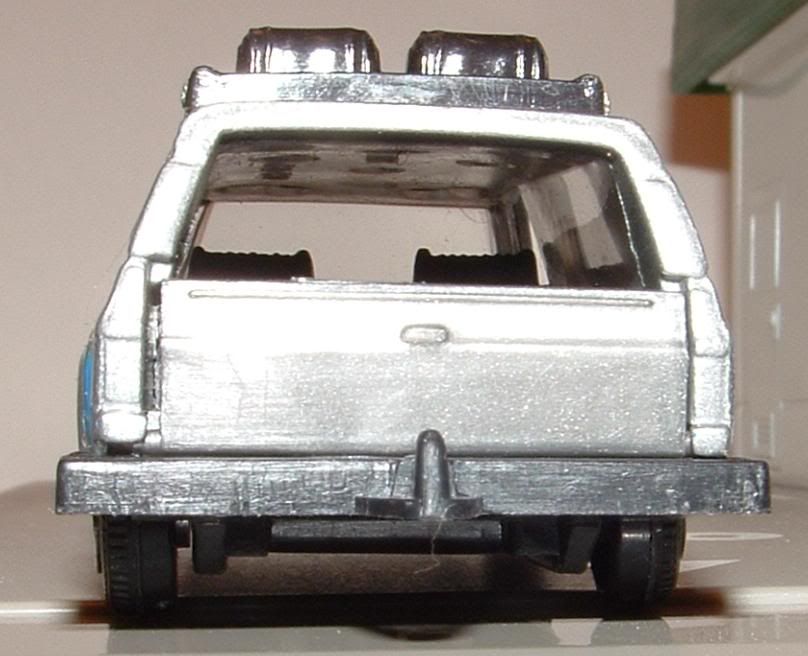
wow exactly the same like my father's die cast, but you have this still in good condition! i like its model. cool suv!
ReplyDeleteWelcome to the blog, and I'm glad you like it! :)
ReplyDelete